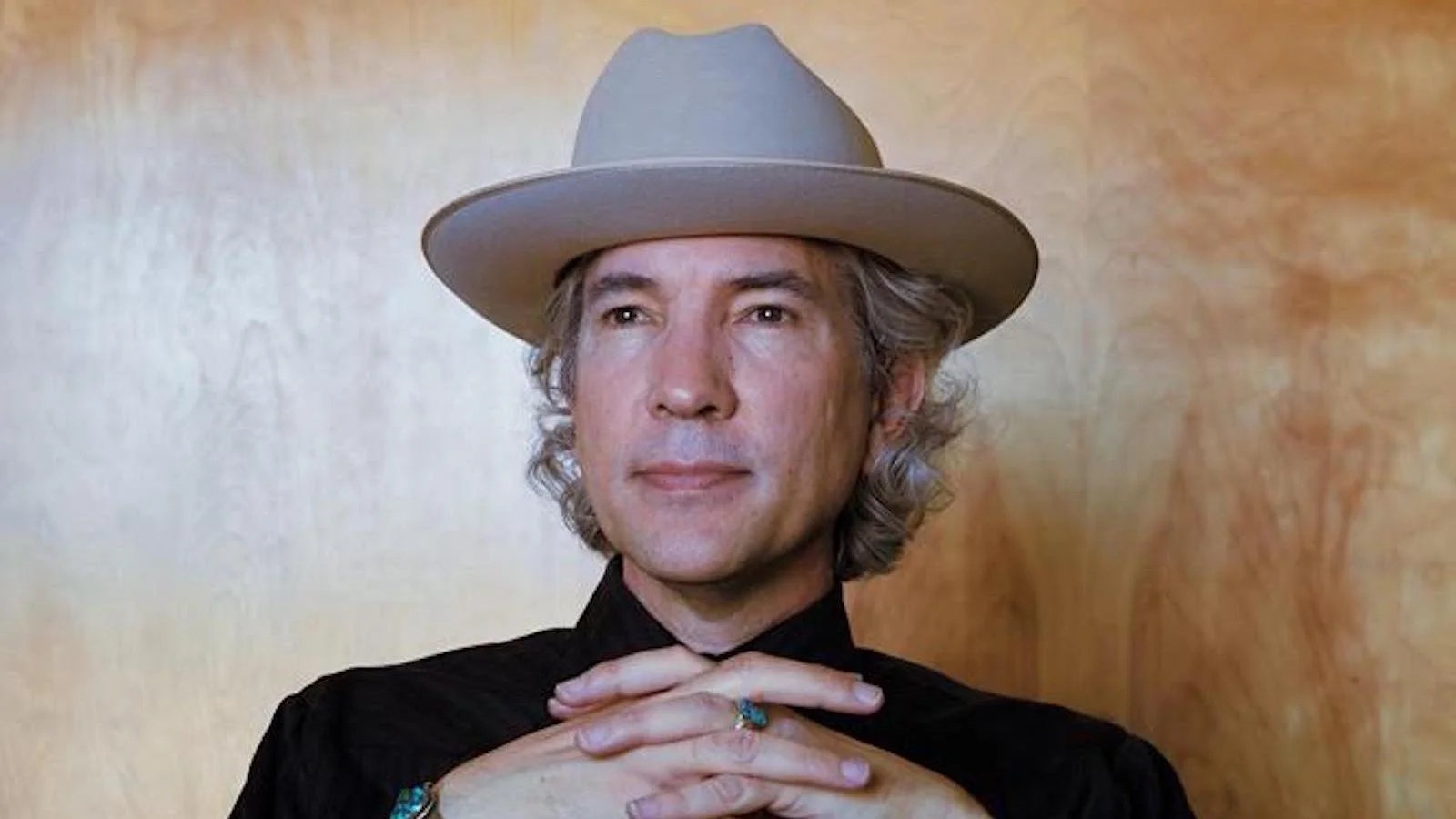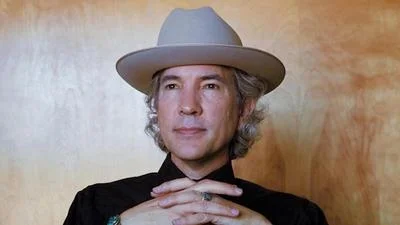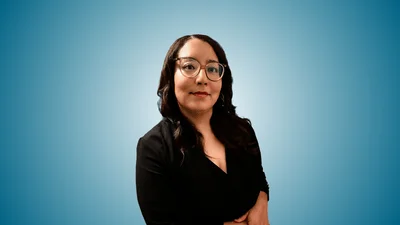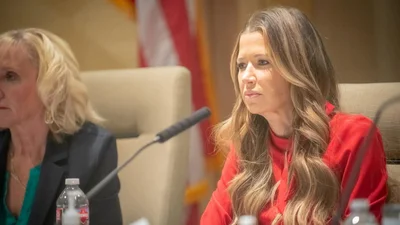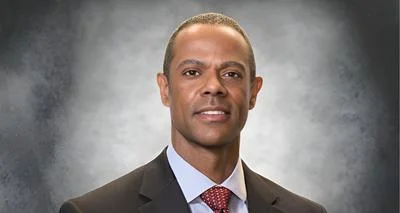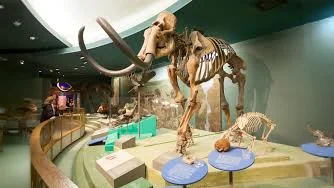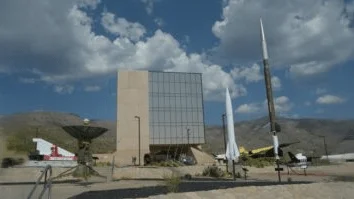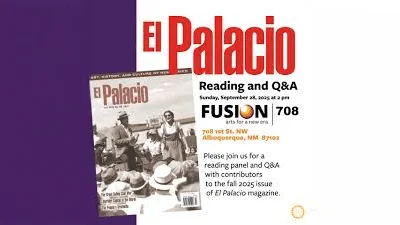To say that artist and filmmaker Bryan Konefsky knows how to make an impact is an understatement. Before the opening of his retrospective, Ladmo, at Fourteenfifteen Gallery & Alpaca Art Space, an unexpected package arrived in my mailbox—a 33⅓ LP titled Nocturnal Admissions. Inside, in collaboration with composer Nina Sheonfeld, Konefsky offered a 3:20-minute work that blended jazz-inflected instrumentation with recordings of himself asleep: dream talk, murmured confessions, restless movements, and the occasional startled exclamation. It was funny, absurd, and deeply human. Like much of Konefsky’s work, it contained an irreverent joy—a refusal to separate insight from laughter.
That same joy filled the gallery on Albuquerque’s 4th Street, tucked into the historic Barelas neighborhood. Paintings from the 1970s and ’80s hung alongside Konefsky’s renowned video art—the medium that has carried his name across international walls and screens. A professor at the University of New Mexico for a quarter of a century, Konefsky has long been one of Albuquerque’s most mischievous treasures, a local trickster-philosopher reminding us not to take ourselves too seriously.
Among the works that caught my attention was The Rejected Project (2004), a beautifully composed wall of rejection letters from art institutions—failure reframed as form. Nearby, his collaboration with artist Kris Mills, Learn to Draw with Kris Mills (2004), carried the same sly humor. Discovering that nearly all official presidential portraits were painted by men, Konefsky proposed a bit of what he called “corrective surgery”: Mills strapped a paintbrush to her waist and drew the presidents herself. The result was gleefully anarchic and quietly radical—a brilliant inversion of artistic convention.
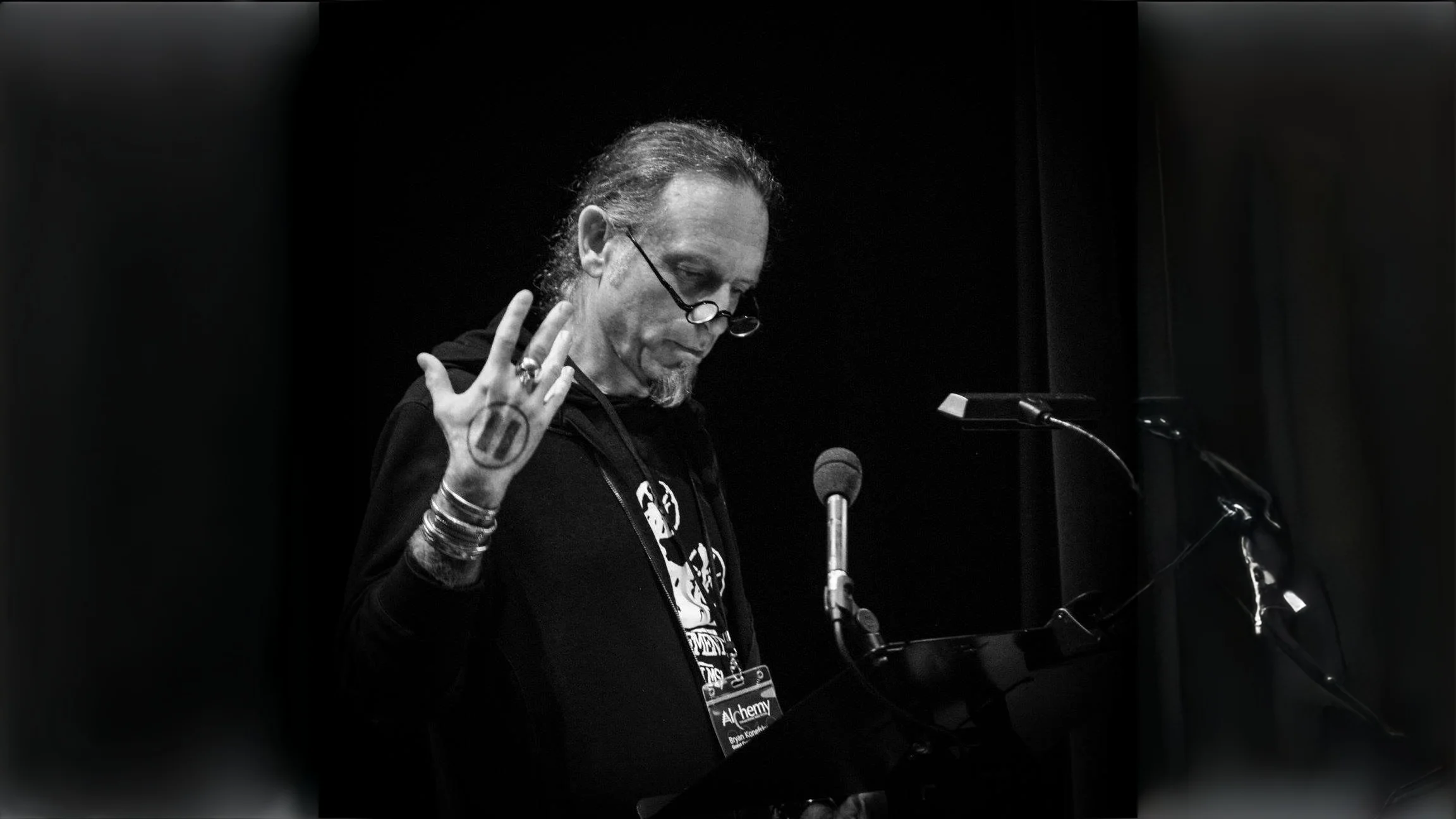
Brian Konefsky
| https://www.bryankonefsky.com/
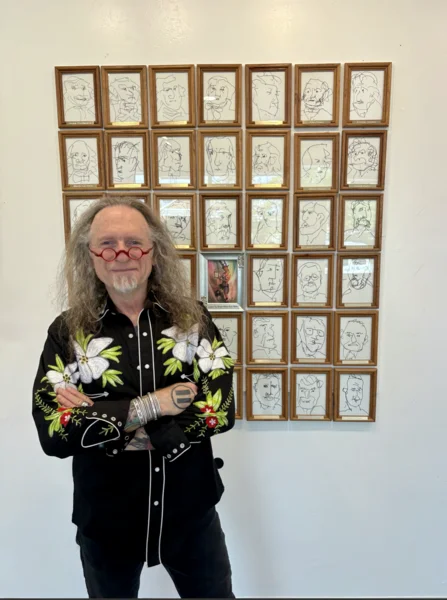 Konefsky in front of Learn to Draw with Kris Mills. | Brian C. Nixon
Konefsky in front of Learn to Draw with Kris Mills. | Brian C. Nixon
Then there was I Pledge Allegiance (2004), in which Konefsky recounts a childhood episode involving the American flag and a classroom performance gone delightfully awry. It’s quintessential Konefsky—comic, cinematic, and tenderly self-aware.
When I later spoke with Bryan, I wanted to understand more about the currents that shape his work.
You’ve shown your work around the world. Why choose an art space in your hometown over a museum for a retrospective?
It’s true that I’ve shown my work at venues across the globe. These venues have been quite varied and attract different audiences. Some of my favorites have included Biennial De La Imagen en Movimient in Buenos Aires, The FIVAC festival in Cuba, The European Media Arts Festival in Germany, The Museum of Modern Art in New York City, The Norwegian Film Institute, and The Erarta Museum of Contemporary Art in St. Petersburg, Russia. However, as fulfilling as these experiences were, I cut my teeth at artist run spaces such as Art in Heaven in New Haven, Connecticut, Artcite in Windsor, Canada and The Other Cinema in San Francisco. There is something very grounding about such venues. These are collectives that always support wildly imaginative shows that for me, feel like coming back to my roots. Artist run spaces encourage shows that take chances that larger institutions often don’t have the curatorial capacity to support. In terms of presenting this retrospective at 1415/Alpaca galleries here in Albuquerque, there were several considerations at play. On one level, I see this as an opportunity to give back to the community, a community that has been supportive of some of my other creative activities such as my work with Basement Films and support for my Experiments in Cinema festival. Additionally, although I am known for both Basement and Experiments, not many folks know me for my own creative output. This exhibit also functions as a beta test as we are hoping to take the show on the road. In that regard, the ZKM Centre for Art and Media in Karlsruhe, Germany is currently in the process of acquiring my personal, creative archives and they will likely host this retrospective in the coming year or two.
Your creative process feels both spontaneous and deliberate. Where do your ideas emerge—from politics, people, dreams?
I suppose I could be glib and state that my creative work is spontaneously deliberate, or deliberately spontaneous. But seriously, my work necessarily responds to experience, dailiness and what some might call the mundane. I am emphasizing this notion of dailiness and the mundane as my work has never embraced the idea of “beauty,” rather I am more interested in exploring the dirt and grit of one’s life. I think it was Henry James who once stated that “a writer is someone on whom nothing is lost.” In other words, experience - in all its nuanced forms - is the most important tool that one has at one’s disposal to creatively interpret the world. To that end, sometimes I feel as if my life is nothing more than a metaphoric piece of fly paper collecting experiences that are then reimagined in a more poetic fashion. These experiences can be large or small, but at the vortex of a project, an alchemic transformation must occur. Most often these transformations respond to an experience that brings with it a good story. But, don’t confuse the idea of “responding” with the idea of “reacting.” Reacting, for me, involves a knee-jerk gesture, where responding - even if it is a spontaneous response - feels more paced, thoughtful and well researched.
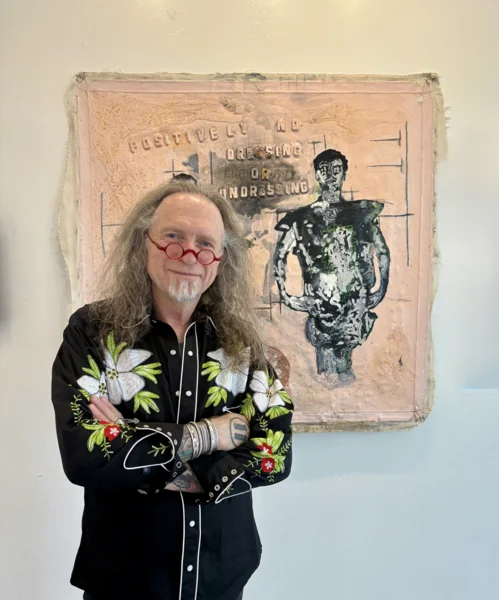 Konefsky in front of his painting Positively No Dressing or Undressing. | Brian C. Nixon
Konefsky in front of his painting Positively No Dressing or Undressing. | Brian C. Nixon
So much of your art carries a winking intelligence—like the crown fashioned from underwear. I’d guess that most of the pieces in this exhibition contain a humorous undercurrent that doubles as critique. Do certain absurdities demand something droll? Can humor reveal truth more clearly than solemnity ever could?
Humor is something I take quite seriously. I do believe that humor can reveal truths in ways that other forms of expression might sidestep or purposely overlook. Humor can function as a catalyst for deeper understanding and a sense of empathy. In some cases, humor functions as a “spoonful of sugar that helps the (dystopia) go down.” Every culture has its own unique forms of humor. Consider the trickster, the Coyote, the stand-up comedian or the court jester. These characters are all “licensed fools.” Their wit and intelligence function to critique cultural norms in radical and sometimes uncomfortable ways. Here, I am using the term “radical” as it relates to its Latin origins meaning “root.” We might also mix into this discussion about the complexities of humor, the notion of “speaking truth to power” as these “licensed fools” have the power and cultural obligation (without consequences) to tell the king to f-off.
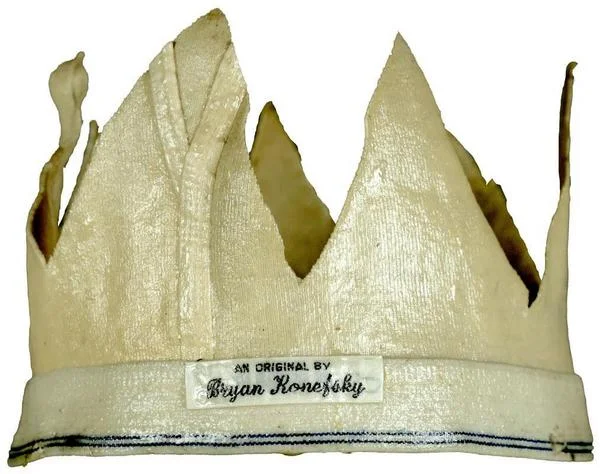 Underpants by Bryan Konefsky. | Photo Provided by artist
Underpants by Bryan Konefsky. | Photo Provided by artist
Ladmo runs through November 7, with a special screening on October 17 at 7:00 p.m. More information can be found at fourteenfifteengallery.com/bryankonefsky
Brian C. Nixon, Ph.D., is Chief Academic Officer and professor at Veritas International University in Albuquerque. As a writer, musician, and artist, his interests surround the philosophical transcendentals: truth, beauty, and goodness. You can contact Brian via his Bandcamp email address: https://briancharlesnixon.bandcamp.com
